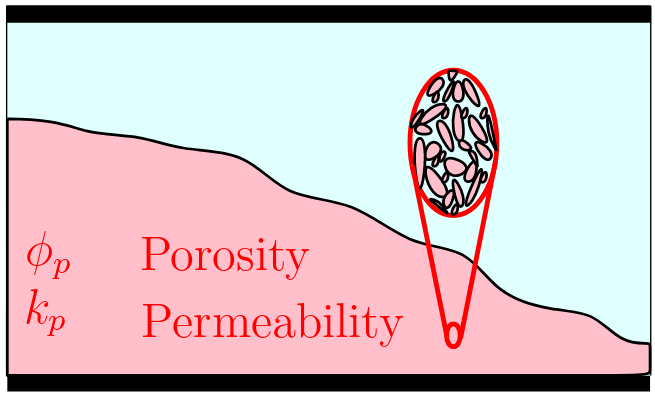Mathematical modeling of microbial enhanced oil recovery with focus on bio-plug technology: from the pore to the core scale, 2019
David Landa Marban
Main content
Advisors: Florin Adrian Radu, Iuliu Sorin Pop and Kundan Kumar
Short description of project:
This dissertation addresses the applications and challenges of both laboratory experiments and mathematical modeling at different scales, where the main character is biofilm. Thus, the first part of this work shows biological, chemical and physical concepts for the laboratory experiments and mathematical terms for the modeling, upscaling and numerical solutions. The second part contains the research papers. In our research, we are interested in studying the biofilm to improve the oil extraction. Most of the biofilm models are based on simplifying assumptions, e.g. impermeability, a constant biofilm density and accounting for diffusion but neglecting convection for transport of nutrients. In this work, we propose a pore-scale model for a permeable multi-component biofilm including a variable biofilm density, detachment and transport of nutrients due to convection and diffusion. It is through laboratory experiments that we identify the key processes and variables that need to be considered. Accordingly, we use experimental determined parameters and compute some of the parameters through calibration. In addition, we study the sensitivity of the parameters in the mathematical models. Pore-scale models are important because they aim to describe physical phenomena in detail and one can derive core-scale models through upscaling. Then, we can reflect the effects of the pore-scale processes on the core scale. Upscaling of pore-scale models allows us to describe the average behavior of a system in an accurate manner with relatively low computational effort. Then, we upscale this pore-scale model in two different geometries: a thin channel and a thin tube, in order to derive one-dimensional effective equations, by investigating the limit as the ratio of the aperture to the length approaches to zero. In the core-scale laboratory experiments, biofilm is grown in cylindrical cores. Permeability and porosity changes over time at different flow rates and nutrient concentrations are studied. Numerical simulations are performed to compare with the experimental results. We also present how to extend the model to include chemotaxis and interfacial tension reduction due to surface active compounds. Mathematical models for biofilms are based on coupled non-linear partial differential equations and ordinary differential equations, which may be challenging to solve. Therefore, it is necessary to use advanced numerical methods and simulations to predict the behavior on time of the unknowns in these complex systems. We present some of the common space discretizations, time discretizations and numerical solvers for these models. We also discuss the difficulty of free boundary problems and the numerical techniques to deal with them. Last but not least, we discuss the challenges of parameter estimation and the application of sensitivity analysis.
Link to thesis at BORA-UiB: http://bora.uib.no/handle/1956/20573
